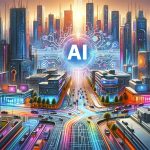The recent innovation DiJiang has significantly improved Transformer models’ efficiency in Natural Language Processing (NLP) tasks. By converting the attention mechanism computations to the frequency domain, DiJiang delivers speed enhancements and reduces training costs without compromising performance. This allows for deployment in resource-limited environments, pushing the boundaries of current AI applications.
Previous attempts to refine Transformer models have encompassed various techniques aimed at reducing their computational demands. These methods include the simplification of attention mechanisms, but they often necessitate extensive retraining, which can be resource-intensive. Scaling up these models to handle complex tasks has led to challenges in processing, inference costs, and energy consumption, particularly in contexts with constrained computational capabilities.
What Challenges Exist for Transformer Models?
Transformers have proven effective in tasks such as machine translation and speech recognition; however, their attention mechanisms, essential for learning dependencies, are computationally intensive. The challenge has been to maintain performance while reducing the complexity and resources required. The traditional models’ quadratic complexity in attention computations inhibits their deployment on memory-restricted platforms.
What Solutions Does DiJiang Offer?
DiJiang introduces a Frequency Domain Kernelization method to address these challenges, employing the Discrete Cosine Transform (DCT) to map attention computations into the frequency domain efficiently. This eliminates the need for softmax operations and significantly decreases the computational overhead, allowing for linear complexity instead of quadratic, which improves scalability and reduces energy consumption.
How Effective is DiJiang in Practical Applications?
The effectiveness of DiJiang has been confirmed through rigorous testing. Its performance is on par with conventional Transformers while offering up to tenfold improvements in inference speed and training cost. This presents an enormous potential for enhancing the execution of NLP tasks, especially in scenarios necessitating rapid, real-time processing.
An exploration in the Journal of Computational Linguistics titled “Frequency-Domain Approaches to Efficient Transformation of Natural Language Models” aligns with the objectives of DiJiang. The paper investigates the viability of frequency-domain methods for reducing the computational load of language models, reinforcing the potential of approaches like DiJiang to revolutionize the field.
Points to Consider for Users?
- DiJiang significantly reduces Transformer models’ training costs.
- It maintains performance while improving inference speeds.
- The method has potential applications in mobile and robotics fields.
In conclusion, DiJiang represents a groundbreaking step in the evolution of Transformer models, particularly in their application within NLP. By addressing the computational inefficiencies of conventional Transformer models, DiJiang unlocks the door to deploying advanced language processing capabilities onto platforms with limited computational power. Its adoption can enable more widespread use of AI, with implications for the development of more interactive and responsive systems. The DiJiang methodology could be transformative for industries and sectors where real-time language processing is pivotal, such as in voice-activated assistants, real-time translation services, and autonomous robotics systems.










